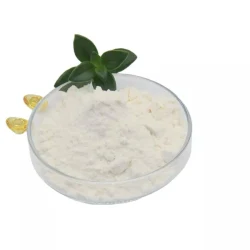Here are some common types of paint pigments and their chemistry
2024-03-22
Paint pigments are chemical compounds or substances that impart color, opacity, and other desired properties to paints and coatings. These pigments are typically finely ground powders or dispersions that are dispersed or dissolved in a binder or vehicle to form a paint formulation. Paint pigments can be derived from various sources, including minerals, synthetic compounds, organic materials, and metallic elements. Here are some common types of paint pigments and their chemistry:
1. Inorganic Pigments:
- Titanium Dioxide (TiO2): Titanium dioxide is one of the most widely used white pigments in paints due to its high opacity, brightness, and UV resistance. It is an inorganic compound with the chemical formula TiO2 and is commonly derived from mineral sources such as rutile and ilmenite.
- Iron Oxides: Iron oxides, including red iron oxide (Fe2O3), yellow iron oxide (Fe2O3·H2O), and black iron oxide (Fe3O4), are natural inorganic pigments derived from iron ores. They provide a range of earthy and reddish-brown colors and are commonly used in architectural paints and coatings.
- Ultramarine Blue: Ultramarine blue is an inorganic pigment made from sodium aluminosilicate with sulfur (sulfosilicates). It produces a deep blue color and is commonly used in artist's paints, decorative coatings, and plastics.
- Chrome Oxide Green: Chrome oxide green is an inorganic pigment with the chemical formula Cr2O3. It provides a bright green color and excellent lightfastness and is commonly used in industrial coatings, plastics, and ceramics.
2. Organic Pigments:
- Phthalocyanine Pigments: Phthalocyanine pigments are organic compounds derived from phthalocyanine dyes. They offer intense colors, high tinting strength, and excellent lightfastness, making them suitable for use in automotive coatings, printing inks, and plastics.
- Azo Pigments: Azo pigments are organic compounds containing azo groups (–N=N–) in their chemical structure. They provide a wide range of colors, including yellows, oranges, and reds, and are commonly used in water-based paints, textiles, and printing inks.
- Quinacridone Pigments: Quinacridone pigments are organic compounds derived from quinacridone dyes. They offer vibrant colors, high transparency, and excellent lightfastness, making them popular choices for artists' paints, automotive coatings, and plastics.
- Perylene Pigments: Perylene pigments are polycyclic aromatic hydrocarbons that provide deep red and violet colors. They are commonly used in automotive coatings, industrial paints, and printing inks.
3. Metallic Pigments:
- Aluminum Pigments: Aluminum pigments consist of finely divided aluminum flakes coated with various substances to enhance their appearance and performance. They provide metallic effects such as silver, gold, and bronze and are commonly used in automotive coatings, decorative paints, and coatings.
- Pearlescent Pigments: Pearlescent pigments are composed of mica flakes coated with metal oxides or other materials to create iridescent or pearlescent effects. They are used in automotive coatings, cosmetics, and specialty paints for decorative purposes.
4. Specialty Pigments:
- Fluorescent Pigments: Fluorescent pigments contain fluorescent dyes or compounds that emit visible light when exposed to ultraviolet (UV) radiation. They produce bright, intense colors and are used in safety coatings, signage, and novelty paints.
- Glow-in-the-Dark Pigments: Glow-in-the-dark pigments contain phosphorescent materials that absorb and store light energy, then emit it gradually in the dark. They are used in novelty paints, glow-in-the-dark signage, and safety markings.
Paint pigments are carefully selected and formulated based on factors such as desired color, opacity, durability, chemical resistance, and environmental considerations. The chemistry of paint pigments plays a critical role in determining the appearance, performance, and longevity of paints and coatings in various applications.



